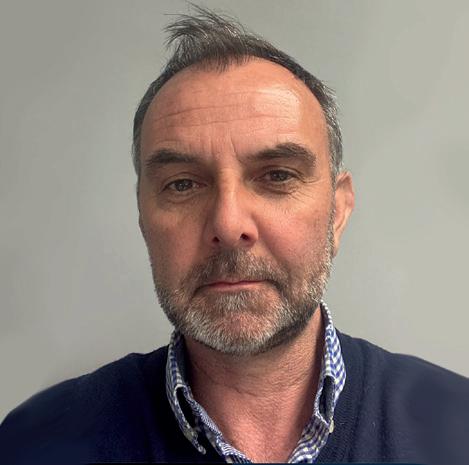
3 minute read
Comment
from MPN NA Issue 22
by MPN Magazine
editor | olivia friett olivia.friett@rapidnews.com advertising | caroline jackson caroline.jackson@rapidnews.com advertising | christine joinson christine.joinson@rapidnews.com advertising | victoria dunsmore victoria.dunsmore@rapidnews.com vp, sales & sales talent | julie balmforth julie.balmforth@rapidnews.com head of studio & production | sam hamlyn graphic design | robert wood publisher | duncan wood
Medical Plastics News is published by: Rapid Life Sciences Ltd, Carlton House, Sandpiper Way, Chester Business Park, Chester, CH4 9QE
T: +44(0)1244 680222 F: +44(0)1244 671074
Medical Plastics News NA Print subscription - qualifying criteria US/Canada – Free UK & Europe – £249 ROW – £249
Medical Plastics News Europe Print subscription - qualifying criteria UK & Europe – Free US/Canada – £249 ROW – £249
FREE on iOS and Android devices
© 2022 Rapid Life Sciences Ltd While every attempt has been made to ensure that the information contained within this publication is accurate the publisher accepts no liability for information published in error, or for views expressed. All rights for Medical Plastics News are reserved. Reproduction in whole or in part without prior written permission from the publisher is strictly prohibited.
BPA Worldwide Membership

Editor’s Comment
OLIVIA FRIETT
THE FUTURE’S LOOKING BRIGHT
Hello, I’d like to welcome you to the Q3 issue of Medical Plastics News International. This is now my second issue of Medical Plastics News and I’m still seeing and learning new things every day. The past few months have been very UK centric – with Med-Tech Innovation Expo at the center of it all, and I have gone on a few road trips for other expos and meetings. I’ve also recently been able to experience my very fi rst (and second) factory tour; learning about new innovative devices and technology is one thing but being able to see the manufacturing and development process in a factory is very insightful.
While I do fi nd myself feeling a lot more comfortable in my position as editor, I am still learning so much – which I think is the best thing about this sector; there will always be new ideas and designs or new ways to improve. I am in awe of the medical fi eld; whilst the world has been changing so vastly over the last couple of years, this sector seems to be thriving.
If we look back to 100 years ago – or even 20 years ago, technology has changed immensely. And as technology is evolving, so is healthcare. The perfect example of this is the COVID-19 vaccine; it took scientists less than two years to fi nd a successful vaccine due to the advanced technology we have now - in comparison to the Spanish Infl uenza just over a century ago which didn’t have an eff ective vaccine until the 1940s.
The advancements we’re seeing in technology is nothing short of incredible, however while innovation is at the forefront of this sector, it’s important to remember that innovation doesn’t necessarily mean the newest and trendiest devices, it’s thinking about the patient and understanding what they need.
George Gallagher, the founder and CEO of Enteral Access Technologies, was able to make a medical device for a family member in hospital from materials in an air freshener factory and eventually developed this into a professional, functional device which now helps thousands of patients in the NHS (you can read the full story in the Q&A section). Knowing your target audience, knowing what the issue is and knowing how to fi x it – this is innovation.
At Med-Tech Innovation Expo, there was a conference called “The PITCH” where up and coming innovators talked on stage about their new products and how they can aff ect the market. It was inspiring seeing so many people - some new to the sector - wanting to create devices that could potentially help patients. Oxford Heartbeat, a company that is trying to make successful high-risk brain stenting surgery a norm, was just one example of the medical plastics innovation at the show.
If the last century is something to go by, then no one knows what the future of healthcare will look like, but the anticipation is invigorating.








